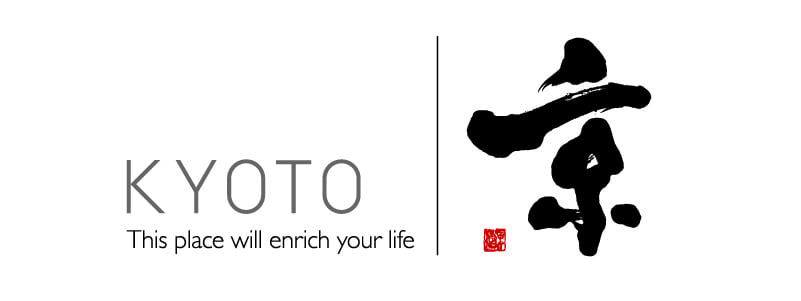Term archive
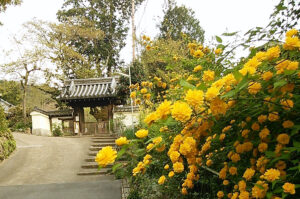
投稿タイプ:sightseeing
Eshin-in Temple
Eshin-in Temple is also known as the "Temple of Flowers," and in spring and autumn, the garden becomes home to vast swathes of flowers that soothe the heart and calm the mind. Tradition has it that the temple began as the ancient temple of Ryusen-ji. Some time later, it was restored by the monk Genshin (Eshin Sozu), renowned as the author of the text "Ojo Yoshu" ("The Essentials of Rebirth in the Pure Land").
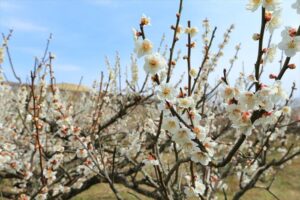
投稿タイプ:sightseeing
Aodani Plum Grove
Commanding a distant view of the holy mountain Jubo, the Aodani Plum Grove spreads out over the gently sloping hills bordering the crystalline Aodani River. The 20-hectare plum grove has been reknowned as a scenic spot since olden times. Its 10,000 plum trees are mainly of white-blossomed varieties, such as the large and fragrant Joshuhaku, Joyo City's plum species. The Plum Festival is held every year from late February to late March.
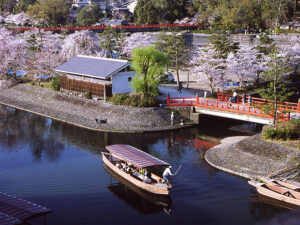
投稿タイプ:sightseeing
Uji River Islands Tonoshima & Tachibanajima
Tonoshima and Tachibanajima Islands are collectively called Nakanoshima (islands in the middle of the river). There is a beautiful 13-story pagoda around 15 meters tall on Tonoshima. It was built in the Late Kamakura period (1192-1333) by the monk Eison, of Nara's Saidai-ji Temple, to pray for the souls of fish. The pagoda, which was buried by the river in a flood in 1756, was rediscovered and rebuilt towards the end of the Meiji period (1868-1912).
The flood levees are famous for the cherry trees that flower there. In early April, the Ujigawa Cherry Blossom Festival is held on the island, which has now become a park.
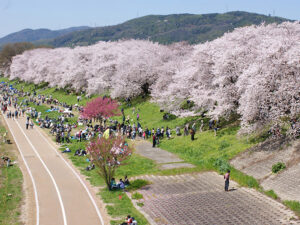
投稿タイプ:sightseeing
Yodo River Park Sewaritei District
This park is located to the north of Iwashimizu Hachimangu Station on the Keihan Line, just across Goko Bridge. Here, you'll find a line of cherry blossom trees that extends for about 1.4 kilometers. The trees were planted at the separation levee where the Kizu-gawa and Uji-gawa Rivers merge, forming a band of flowers in early April. The surrounding area is a riverside park with a large lawn and a lookout area.
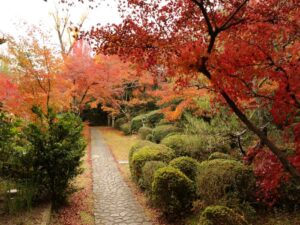
投稿タイプ:sightseeing
Zenporitsu-ji Temple (Maple Temple)
Zenporitsu-ji Temple, located in the southeast of Iwashimizu Hachimangu Shrine in Yawata City, Kyoto, was donated by Zenpoujikyusei, the officer of Iwashimizu Hachimangu Shrine, in 1257 as a dormitory for the monks. Jissou-Shonin, a master from Todai-ji Temple in Nara, was invited to be the founder of the temple.
It is said that Ryoko, the great-granddaughter of Zenpoujikyusei, married Ashikaga Yoshiakira and gave birth to the third generation Shogun Ashikaga Yoshimitsu, and was deeply tied to the Muromachi Shogun family.
Many maple trees (momiji) donated by Ryoko are planted in the gardens, and in autumn, nearly 100 maple trees turn red, creating beautiful scenery that has earned the temple the name of “Momiji Temple.”
The main hall and the front gate are designated as cultural assets of Kyoto Prefecture. In addition, the temple has a total of 9 designated cultural assets of Yawata City, such as its seated statue of Amida Buddha (Amida Nyorai) with jewel crown and the seated statue of the Yawata Buddhist monk (Reservations are required for visits of the interior of the main hall).
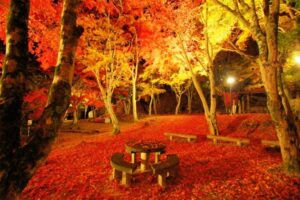
投稿タイプ:sightseeing
Mt. Kasagi / Kasagi-yama Maple Park
Mt. Kasagi in Kasagi rises 288 meters about the south bank of the Kizu River. It is home to many strange and mysterious rock formations giving it the nickname “Megalith Theme Park” and is designated as a historic scenic spot in Japan. Although it is not an easy hike, anyone with average ability can reach the top and enjoy the spectacular views.
From the top of the mountain, it looks like you are on an island floating in a sea of clouds. The view from the top of the mountain was a popular place to moon gaze during the Edo Period. The view is particular spectacular during the autumn season when the entire 3,000 sq. meter river valley is covered in carpet of red maple leaves
Mt. Kasagi is of great historical significance. It is home to a Shingon Buddhist temple of the Chisan School with historic connections to Todaiji on nearby Nara. Famous monks such as Jokei have lived at the temple and Yamabushi, or warrior hermits said to be imbued with supernatural powers, are said to have trained here; making it an important part of Japanese Buddhist history. What’s more, in the late Kamakura period (1185–1333), it was also the stage of foiled plot kill the shogun by the 96th Emperor Go-Daigo.
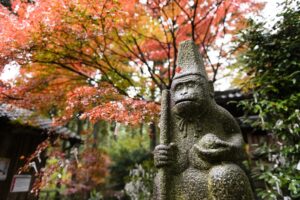
投稿タイプ:sightseeing
Sarumaru Shrine
The shrine is dedicated to Sarumaru Dayu, who was a traditional waka poet. One of his famous poems was included in Hyakunin Isshu (a classical anthology): “Autumn at its saddest - Rustling through the leaves and moving on alone deep into the mountains, I hear a lonely stag belling for his doe.” Currently, the shrine's deity is widely worshipped as a deity "to remove bumps" and “to prevent cancer." The shrine's monthly festival is held on the 13th of every month, and the main festival (Taisai) on April 13th and September 13th. The fire festival will be held on June 13th and December 13th.
Autumn leaves around the temple grounds turn red in late November, a sight which is well worth seeing.
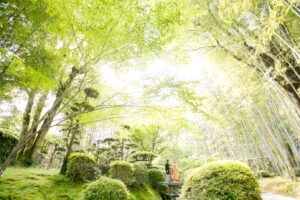
投稿タイプ:sightseeing
Shokado Garden Art Museum
Shokado Garden Art Museum is associated with Shokado Shojo (1584-1639), who was a buddhist priest from Iwashimizu Hachimangu Shrine.
Shokado Garden has an area of approximately 20,000㎡, and the Soan Shokado, where Shojo lived after his retirement (currently closed to visitors due to the earthquake of June 18, 2018). The garden is also home to three tearooms, Sho-in, Chiku-in, and Bai-in. In the garden, in addition to more than 40 kinds of bamboo and nearly 200 camellia trees, plum trees, cherry trees, green maple trees and Japanese maple trees can also be found, creating beautiful scenery across all four seasons.
Shokado Art Museum has special exhibitions held in spring and autumn each year, and exhibitions focused on the museum collections around three times a year.
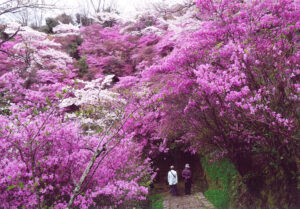
投稿タイプ:sightseeing
Jindo-ji Temple
Located in the mountains of the Tea infused region of Kyoto, just outskirts of Kizugawa city, Jindo-ji Temple is home to a many hidden treasures. The grounds turn various shades of pink and purple with cherry blossoms and azaleas which form a tunnel of flowers over the stone steps leading up to the bell tower in spring. The temple also houses numerous important cultural properties which can be seen via a guided tour with a priest.
Jindo-ji is said to have been built by Prince Shotoku in 596 and later prospered as a dojo for the Shugendo School of mountain asceticism. The mountain where it resides once was home to many temples but all were burned down in a fire with only Jindo-ji being rebuilt in 1406. It is said that the main statue of the temple was carved when the founder of Shugendo, En no Gyoja, while he practiced on the mountain.
Including the main hall (Zao-do), built in the Muromachi period, there are six important cultural properties in the storage: the wooden Fudo Myo-ou statue, the wooden Aizen Myo-ou sitting statue, the wooden Amida Nyorai sitting statue, the Bishamon Ten standing statue, the Nikko Bosatsu statue, and the Gekko (Moonlight) Bodhisattva statue.
It is recommended you walk to the temple from Tanakura station on the JR Nara line so you can enjoy the view of the tea fields and refreshing mountain air.
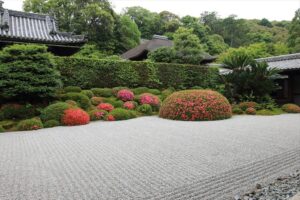
投稿タイプ:sightseeing
Ikkyu-ji Temple
Ikkyu-ji Temple was restored under the order of Ikkyu Sojun, a Japanese Zen Buddhist priest, who is widely known in Japan as having been quite witty, and thus the subject of many interesting stories. The temple has a garden, known as “Hojo Garden,” designated as a place of scenic beauty, as well as the main hall building, designated an Important Cultural Property. The Hojo Garden consists of a North Garden, East Garden, and South Garden, each of which has a different atmosphere and particular type of beauty. At the temple, visitors can enjoy traditional shojin vegetarian cuisine, as eaten by Japanese Buddhist monks, with dishes such as “Shojin Tenshin" (a light vegetarian meal), “Shojin Makunouchi" (a vegetarian box lunch), and “Shojin Honzen" (a full-course vegetarian dinner). Ikkyu-ji Temple’s original natto (fermented soybeans) are also popular as a souvenir from the temple. Traditionally, making the natto is one of the tasks for the temple’s incumbent chief priest.
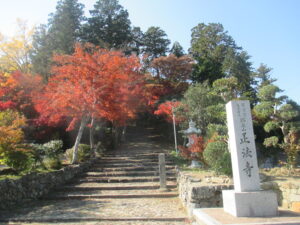
投稿タイプ:sightseeing
Shoho-ji Temple (Wazuka-cho)
The temple is believed to have been established by the monk Gyoki in order to console the spirit of Prince Asaka, son of Emperor Shomu.
Ginkgo and maple trees are planted throughout the approach on the temple grounds, and their autumn leaves give a festive atmosphere to the normally quiet old temple.
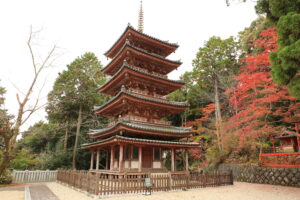
投稿タイプ:sightseeing
Kaijusen-ji Temple
Legend has it that Fujioyama Kannonji Temple was founded in 735 when Emperor Shomu ordered a Buddhist monk to enshrine the Eleven-faced Kannon Bodhisattva in order to pray for the safe construction of the Great Buddha statue.
Unfortunately, the temple was burnt down in 1137. In 1208, Jokei, a monk of Kasagidera Temple, moved to the abandoned site of Kannonji Temple, and built a hermitage for training. The place was renamed Fudaraku-san Kaijusen-ji Temple and was revived.
The five-storied pagoda, which is 17.7 m high and painted in red, is a precious relic of the Kamakura period, thus designated as a national treasure of Japan. Other treasures of the temple include the main deity statue of the Eleven-faced Kannon Bodhisattva, the Monjudo hall, the colored Hokke Mandala painting on silk cloth, and Kaijusen-ji Temple’s documents, all of which are designated as important cultural properties.
In the grounds, there is an “Eggplant seat” said to fulfill your wishes when you sit on it, and a huge Yamamomo tree selected as one of the “200 Natural Views in Kyoto”. The autumn foliage here is beautiful and you can enjoy looking out at the Kunikyo Palace and Heijo Palace from the altitude of 200 meters while also enjoying the maple leaves.
